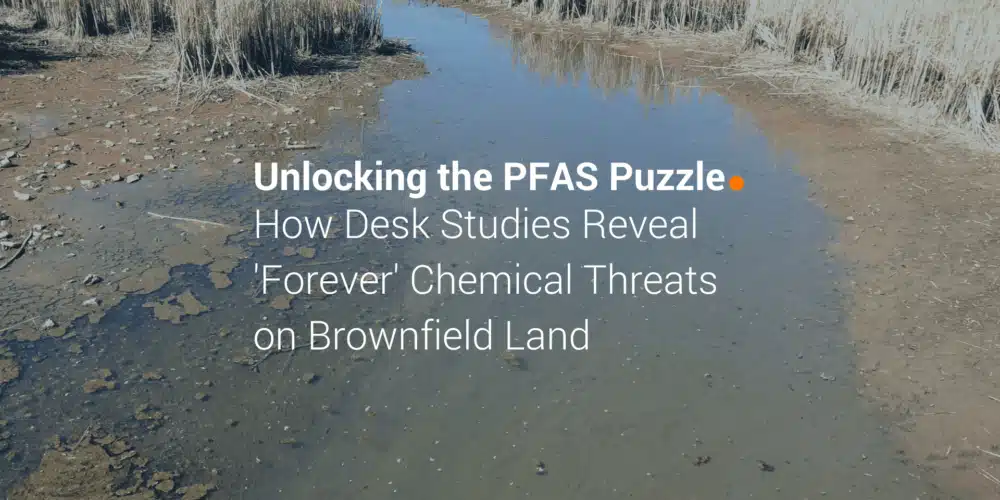
#tldr The potential for PFAS – so called “Forever” chemicals – to have been made, stored, used or disposed of on brownfield land needs to be considered during the preliminary risk assessment by a detailed interpretation of historic land uses and practices revealed by the desk study.
In the world of land contamination, there is no group of substances with a higher profile at the moment, than the universe of PFAS.
The 1852 first edition of Roget’s Thesaurus contained 15,000 words. Today, over seven million PFAS have been named. This universe of man-made chemicals includes substances with strange properties that have both served us well and now pose serious threats to human and environmental health.
NB All the acronyms used in this blog are explained… eventually.
Products containing different mixtures of per- or poly-fluorinated alkyl substances (PFAS) have been widely used in fire-fighting foams and as water or grease-repellent coatings on textiles, carpets, food wrapping. They are often found in landfills and wastewater treatment plants.
The manufacture, use, disposal and dispersion into the environment of PFAS means they have to be considered in a preliminary risk assessment (PRA) for (almost) all sites. A detailed understanding of how a site has been used over the past 80 years including where PFAS may have been stored or disposed of is needed. Sites need to be investigated with particular care to avoid cross-contamination of soil or water samples with PFAS from waterproof or fire-resistant clothing and other equipment.
Analysing soil and water for individual or groups of PFAS is costly so targeted sampling and analysis is essential. Find more details in this blog post.
So what clues might we look for in a desk study that PFAS may be in the soil or water at our site?
The obvious ones are land uses very likely to be associated with PFAS pollution: civilian and military airports, fire training areas, factories where textiles, carpets and leather were treated with PFAS, electronics, landfills, waste water treatment plants. Paper or cardboard food packaging may be grease proof by a PFAS coating. PFAS were used to ensure surfaces were clean before being coated with chromium or other metals or in electronics manufacture. PFAS were used as part of photographic and other printing processes. Car and floor polishing used PFAS.
Less obvious clues are processes where fire suppression systems were installed in buildings or chemical engineering installations that released foam via sprinklers. These systems were needed to extinguish fires involving flammable and combustible liquids fire (such as petrol and other fuels) and solvents in industrial products (such as paint, ink, adhesives and cleaning fluids).
Soil and water screening values for PFAS are low – incredibly low. So even operations like washing down a fire appliance can leave measurable residues on land where PFAS were neither stored nor used.
So when reviewing desk study information or an account of a site’s history, it is worth asking what fires could have been anticipated, how were surfaces cleaned or polished, where were foams stored or trained with. That way, sampling and analysis locations can be targeted to where they are needed.
Paul Nathanail is a Chartered Geologist and Specialist in Land Condition and writes in his personal capacity. He is currently leading a team drafting technical guidance on the investigation, assessment and remediation of PFAS in soil and water environments.
Follow up reading
PFAS, PubChem
An overview of the uses of PFAS to assist with identification of sites of concern, Ian Ross for CLAIRE
